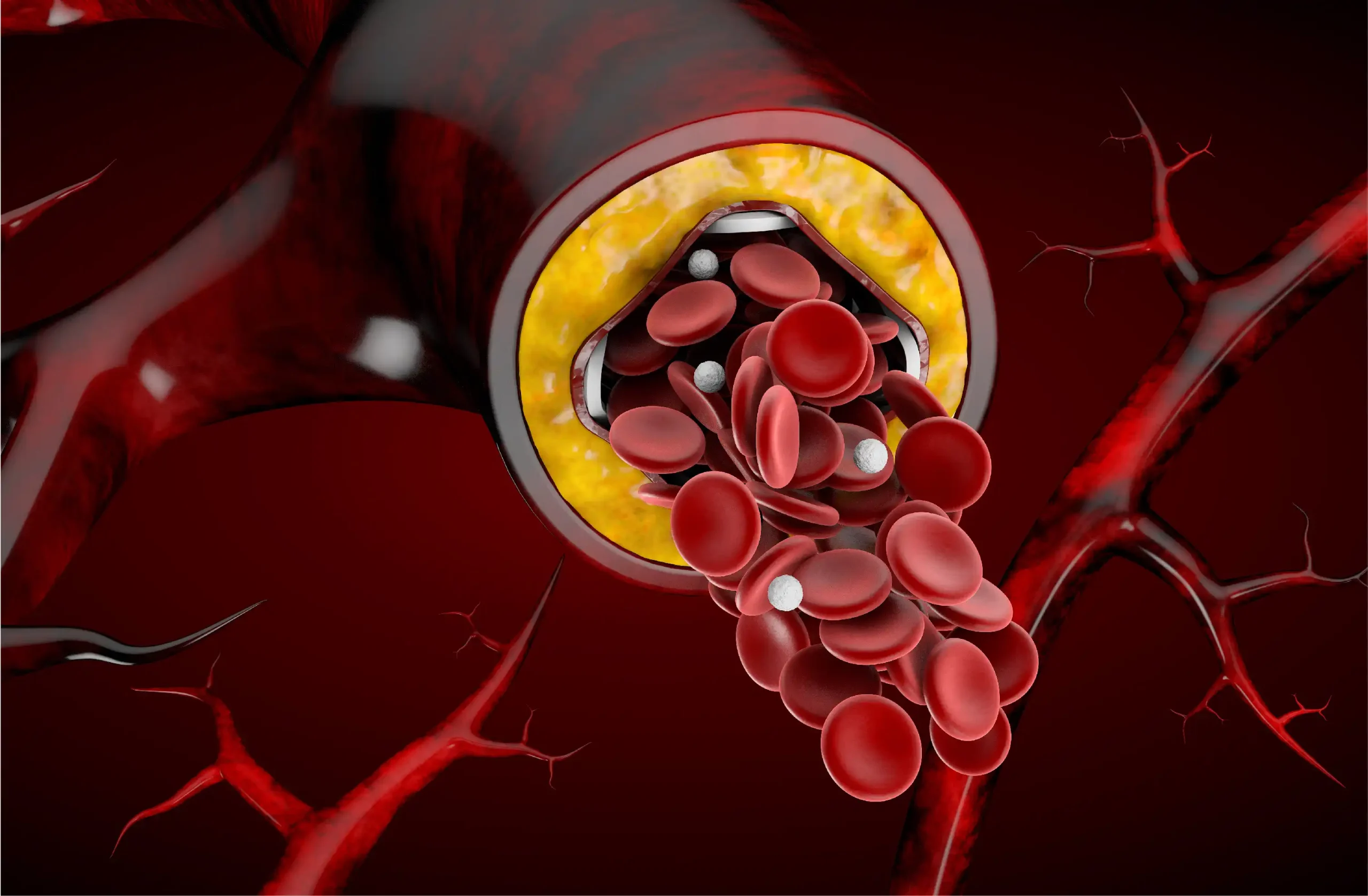Blood circulation is something we rarely think about, yet it’s happening every moment, keeping us alive and healthy. Every heartbeat sends blood on a journey through a network of vessels, delivering oxygen and nutrients to every cell and carrying away waste products. But how long does it actually take for blood to make a full trip around your body?
In this blog, we’ll take a closer look at the speed and efficiency of this life-sustaining process. Understanding the basics of blood circulation can give us a new appreciation for our cardiovascular system and its importance in our overall health.
Understanding the Key Factors That Govern Blood Flow
Blood flow through our body isn’t random—it’s a precisely regulated process influenced by several important factors. Each of these parameters plays a role in ensuring that blood reaches every cell with the right amount of oxygen and nutrients. Let’s explore these governing factors and how they work together to keep our circulation system running smoothly.

1. Blood Pressure
Blood pressure is one of the primary forces driving blood flow through the body. It’s created by the pumping action of the heart, pushing blood through the vessels. Blood pressure has two key readings:
- Systolic Pressure: This is the pressure when the heart contracts, pushing blood out.
- Diastolic Pressure: This is the pressure when the heart relaxes between beats.
Together, these pressures keep blood moving, overcoming resistance in the vessels and ensuring circulation to even the smallest capillaries. High or low blood pressure can impact blood flow, making it essential for overall heart health.
2. Resistance in Blood Vessels
Resistance is the force that opposes blood flow within the vessels. Think of it like friction in a hose—when resistance is higher, it becomes harder for blood to flow smoothly. Resistance depends on three main factors:
- Vessel Diameter: Narrower vessels increase resistance, while wider vessels decrease it.
- Blood Viscosity: Thicker blood (increased viscosity) faces more resistance, making it harder to circulate.
- Vessel Length: Longer blood vessels add more resistance; however, this factor remains relatively stable in adults.
Small changes in vessel diameter, caused by muscles around the vessels contracting or relaxing, can significantly influence resistance and, therefore, blood flow.
3. Heart Rate and Cardiac Output
The heart rate (number of beats per minute) and cardiac output (volume of blood pumped by the heart per minute) directly impact blood flow. When we exercise, for example, our heart rate increases, and the heart pumps more blood to meet the body’s heightened demand for oxygen.
- Cardiac Output = Heart Rate × Stroke Volume (amount of blood pumped per beat)
By adjusting heart rate and cardiac output, the body can quickly respond to changes in physical activity or stress.
4. Blood Volume
The amount of blood circulating in the body, or blood volume, affects circulation. If blood volume is low, as in cases of dehydration or blood loss, the body may struggle to maintain adequate blood pressure and flow. On the other hand, excess fluid in the blood can strain the heart and vessels, sometimes leading to high blood pressure. Maintaining a stable blood volume is essential for smooth and efficient blood flow.
5. Autonomic Nervous System Control
Our autonomic nervous system (ANS) automatically regulates blood flow according to our needs. For example:
- Sympathetic Nervous System: This system activates during stress or physical activity, increasing heart rate and narrowing some blood vessels to redirect blood to muscles.
- Parasympathetic Nervous System: This system dominates during rest, slowing down the heart rate and allowing blood vessels to widen, encouraging blood flow to organs like the digestive system.
The ANS responds rapidly to any changes, making sure our blood flow adapts in real time to keep up with what our bodies require.
How Long Does It Take For Blood To Circulate?
The cycle happens fast—taking about 20 seconds for one complete round-trip under normal conditions. Understanding this journey involves looking at the key elements of blood flow, from the heart’s pumping action to the smallest capillaries.
The Heart’s Pumping Power and the Start of Blood Flow
Circulation begins in the heart, a powerful muscular pump that contracts to propel blood through the entire circulatory system. Each beat consists of two main phases:
- Systole is when the heart contracts, pushing blood out with force. This creates what we know as systolic pressure, the highest pressure in the system. It’s during this phase that blood is pushed into the aorta, the body’s main artery.
- Diastole is when the heart relaxes between beats, allowing it to fill with blood for the next contraction. This relaxation period creates diastolic pressure, maintaining a steady, even flow through the circulatory system even when the heart isn’t actively pumping.
The force generated by the heart is enough to push blood through the large vessels initially, setting blood on its path to reach every tissue in the body.
Blood’s Main Pathway Through Aorta
As blood leaves the heart, it flows into the aorta, the largest artery. The aorta plays a central role in blood distribution, delivering freshly oxygenated blood from the heart to all major arteries, which branch off to supply various organs and tissues.
Blood enters the aorta at high pressure, a force necessary to move blood quickly through the entire body. The speed in the aorta is rapid—about 30-40 cm per second—reflecting the strength of the heart’s contraction. However, as blood travels down the aorta and into smaller arteries, the pressure gradually drops to adapt to the narrowing pathways.
Blood Flow Through Capillaries
After moving through arteries and arterioles, blood eventually reaches the capillaries, the smallest vessels. The capillaries are where the real work happens; here, blood exchanges oxygen and nutrients with tissues, while picking up waste products like carbon dioxide.
By the time blood enters the capillaries, the flow slows considerably, moving at about 1-2 cm per second. The pressure here is also much lower, dropping to around 20-30 mmHg. This slower pace is essential because it gives blood enough time to release oxygen and absorb waste from the surrounding cells. Capillaries are so tiny that red blood cells pass through them one by one, maximizing contact and efficiency in exchange.
The Role of Blood Pressure Throughout the Circulatory System
Blood pressure is a critical component in managing blood flow across the different stages of circulation. Starting with high pressure in the aorta (about 120 mmHg during systole), the pressure gradually drops as blood moves further from the heart and passes through progressively smaller vessels. By the time blood reaches the veins, the pressure is very low, around 2-5 mmHg.
This pressure gradient is key for keeping blood moving continuously and efficiently. In arteries, higher pressure keeps blood moving swiftly, while lower pressure in capillaries ensures a controlled, gentle flow. Without this balance, blood flow could become either too forceful or too slow, disrupting circulation and affecting oxygen delivery to tissues.
How Quickly Blood Circulates Through the Body
On average, it takes about 20 seconds for blood to make a complete round-trip through the circulatory system, although this timing can vary depending on factors like heart rate and physical activity. When you’re exercising, for example, your heart pumps faster, and circulation speeds up to meet the increased oxygen demand of your muscles. In contrast, during rest, circulation slows down slightly.
Final Words
Blood circulation is a continuous, complex process that supports every cell, fueling life and energy. By understanding and caring for this system, we contribute to a stronger, healthier body with every heartbeat. This invisible process is at the core of our vitality, making it clear that prioritizing cardiovascular health is key to staying energized and well.







